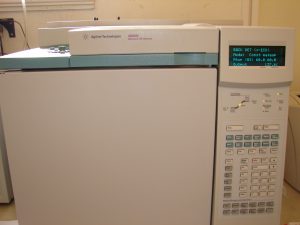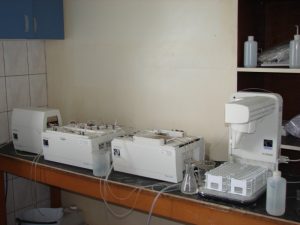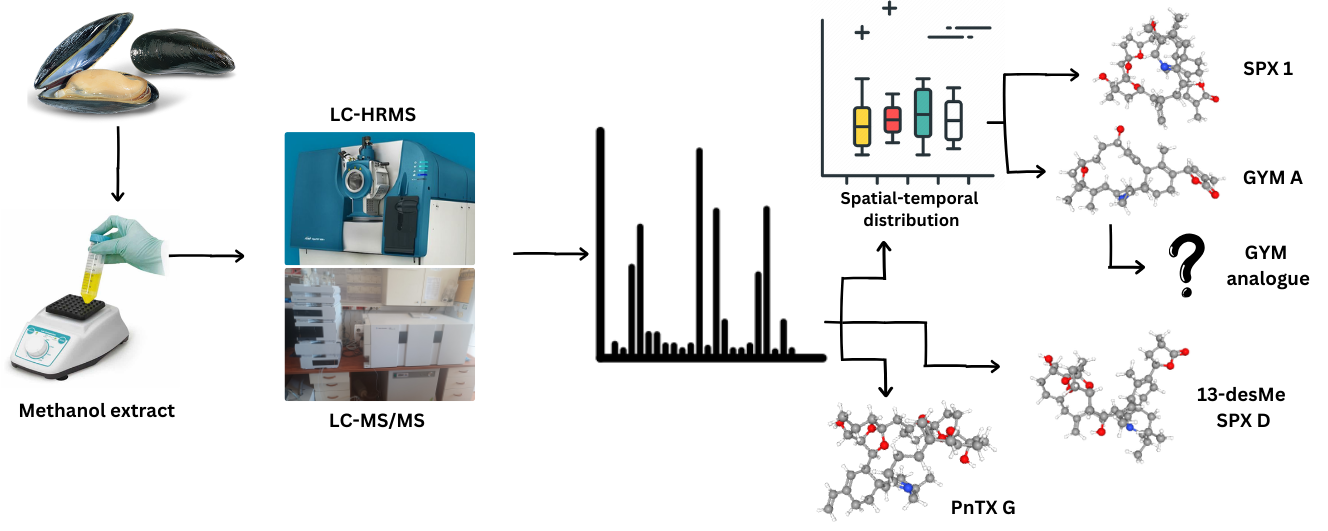Laboratory for Chemical Oceanography and Sedimentology of the Sea
About the lab
Employees (Scientists) of the laboratory conduct basic scientific and applied research in chemical oceanography and sedimentology.
Our research includes:
- monitoring the state of chemical parameters in seawater, sediment, and organisms (algae, bivalves, fish)
- laboratory and field investigations of processes that affect the biogeochemical behavior of various chemical elements and compounds in the sea
- development and application of new, high-specific methods for determining nutrient inorganic salts, trace elements, and organic compounds in the marine environment
- determination of the presence of pollutants in the marine environment and their harmful effects on organisms
Field research is carried out in the marine environment of different trophic statuses (estuaries, estuaries, bays, open seas, and farms of marine organisms) with the aim of detecting changes occurring under the influence of anthropogenic or climatic factors.
Seawater samples determine the pH value, dissolved oxygen content, concentrations of dissolved inorganic forms of nutrient salts (nitrates, nitrites, ammonia, orthophosphate, silicates) as well as organic phosphorus and nitrogen, organic pollutants, and trace elements.
The sediment explores the redox potential, granulometric composition of sediments, the content of carbonates, organic matter, organic carbon, total nitrogen, speciation of phosphorus forms, and organic pollutants and trace elements.
In marine organisms, organic pollutants and trace elements are determined.
The laboratory is equipped with a number of devices: a photoelectric colorimeter (AA500 Seal Analytical), spectrophotometer (Shimadzu UV Mini 1240), atomic absorption spectrometer (Perkin Elmer Pinnacle 900 T), direct mercury analyzer (Milestone DMA-80), gas chromatograph GC (Agilent 6890), microwave sample device (Speedwave 4, Berghof), pehametri (Mettler Toledo, Sartorius), deionizer (Purelab flex, ELGA), cryogenic mill (6875 Freezer/Mill, Spex Sample Prep), analytical balances (Mettler-Toledo), laboratory dryers, laboratory dryers, laboratory devices, annealing furnaces and seawater and sediment samplers on the IB “Bios DVA”.
Staff
Publications
Age and growth of Pecten jacobaeus in the eastern Adriatic Sea–why location matters?
In situ diversity of the marine diatom genus Pseudo-nitzschia based on morphological characterisation
Plankton communities in oligotrophic offshore environments in the Eastern Adriatic Sea in relation to mesoscale hydrodynamic fluctuations
Projects
Equipment
()
()
()
QIAxcel Advanced System – kapilarna elektroforeza visoke rezolucije
Multifunction sensor for the Simrad PX 80 catch monitoring systems.
()
()
()
()
()
()
()
()
()
()
Used for “grazing” experiments. Diffusion chamber with 150 mL volume and area/volume ratio of 0.67 equipped with two diffusion membranes 8 cm in diameter with pores 0.2 μm in diameter. (The chamber was designed by Šolić and Krstulović, 1994.)
()
()
Used for separating bacteria cells from sediment particles.
Used in the process of determining indicators of fecal matter by the method of membrane filtration. Also used for the preparation of subjects for epifluorescent microscopy.
Used for maintaining temperature while incubating microorganisms alongside additional mechanical stirring.
Used for sterilization of microbiological matter.
Used for maintaining the optimal temperature for incubating microorganisms, as well as conducting various experiments under specific temperatures.
Has various uses; maintaining the temperature of solids before being poured out, conducting experiments at specific temperatures, ensuring stable temperatures for thermometer adjusting…
Flow Cytometer is used for the characterization and quantification of different organisms within microbial community based on cell physical properties.
Liquid Scintillation Analyzer TriCarb 2910TR enables monitoring of various processes occurring within microbial cells by the incorporation of the radioactive labeled substrates.
Epifluorescent microscopes (Olympus BX 50 and Olympus BX51) equiped with the camera is used for the visualisation of microbial cells.
Used for gravitational separation of particles. Max number of revolutions 14 000 rpm.
()
()
()
()
()
()
()
()
()

Gas chromatograph GC (Agilent 6890) is used for determining the concentration of organic polluters in sediment and organisms.
Direct mercury analyzer (Milestone DMA-80) used for determining the concentration of mercury in sediment and organisms.
(Info)
The Laboratory is equipped with two spectrophotometers (Shimadzu UV Mini 1240) used for determining the concentration of nutrient salts in seawater and sediment samples.
Automatic analyzer AA500 Seal Analytical (photoelectric colorimeter) for determining the concentration of nutritional salts in seawater samples.


